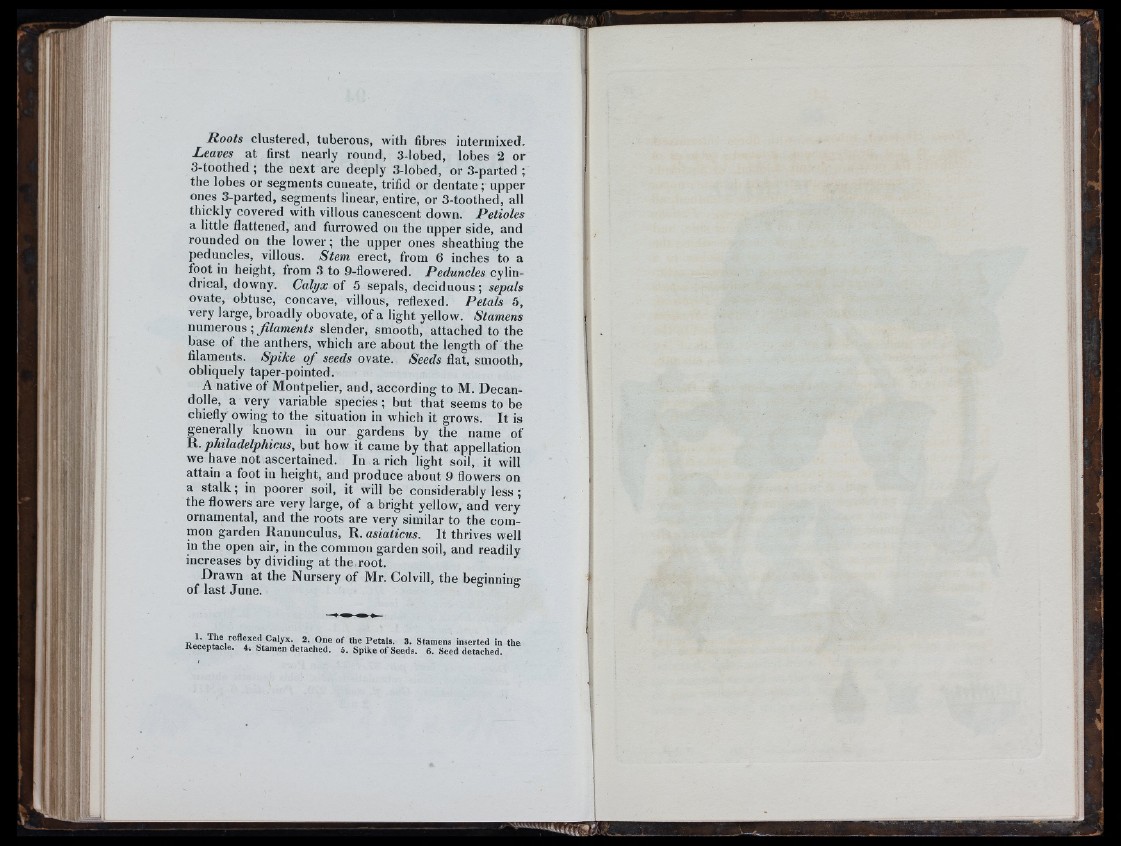
Roots clustered, tuberous, with fibres iateriuixed.
Leaves at first nearly round, 3-lobed, lobes 2 or
3-toothed; the next are deeply 3-lobed, or 3-parted ;
the lobes or segments cuneate, trifid or dentate; upper
ones 3-parted, segments linear, entire, or 3-toothed, all
thickly covered with villous canescent down. Petioles
a little flattened, and furrowed on the upper side, and
rounded on the lower; the upper ones sheathing the
peduncles, villous. Stem erect, from 6 inches to a
foot in height, from 3 to 9-flowered. Peduncles cylindrical,
downy. Calyx oi 5 sepals, deciduous; sepals
ovate, obtuse, concave, villous, reflexed. Petals 5,
very large, broadly obovate, of a light yellow. Stamens
numerous; filaments slender, smooth, attached to the
base of the anthers, which are about the length of the
filaments. Spike o f seeds ovate. Seeds flat, smooth,
obliquely taper-pointed.
A native of Montpelier, and, according to M. Decandolle,
a very variable species; but that seems to be
chiefly owing to the situation in which it grows. It is
generally known in our gardens by the name of
E. philadelphicus, but how it came by that appellation
we have not ascertained. In a rich light soil, it will
attain a foot iu height, and produce about 9 flowers on
a stalk; iu poorer soil, it will be considerably less ;
the flowers are very large, of a bright yellow, and very
ornamental, and the roots are very similar to the common
garden Ranunculus, R. asiaticus. It thrives well
in the open air, in the common garden soil, and readily
increases by dividing at the root.
Drawn at the Nursery of Mr. Colvill, the beginniug
of last June.
2. One of the Petals. 3. Stamens inserted in the
Receptacle. 4, Stamen detached. 5. Spike of Seeds. 6. Seed detached.